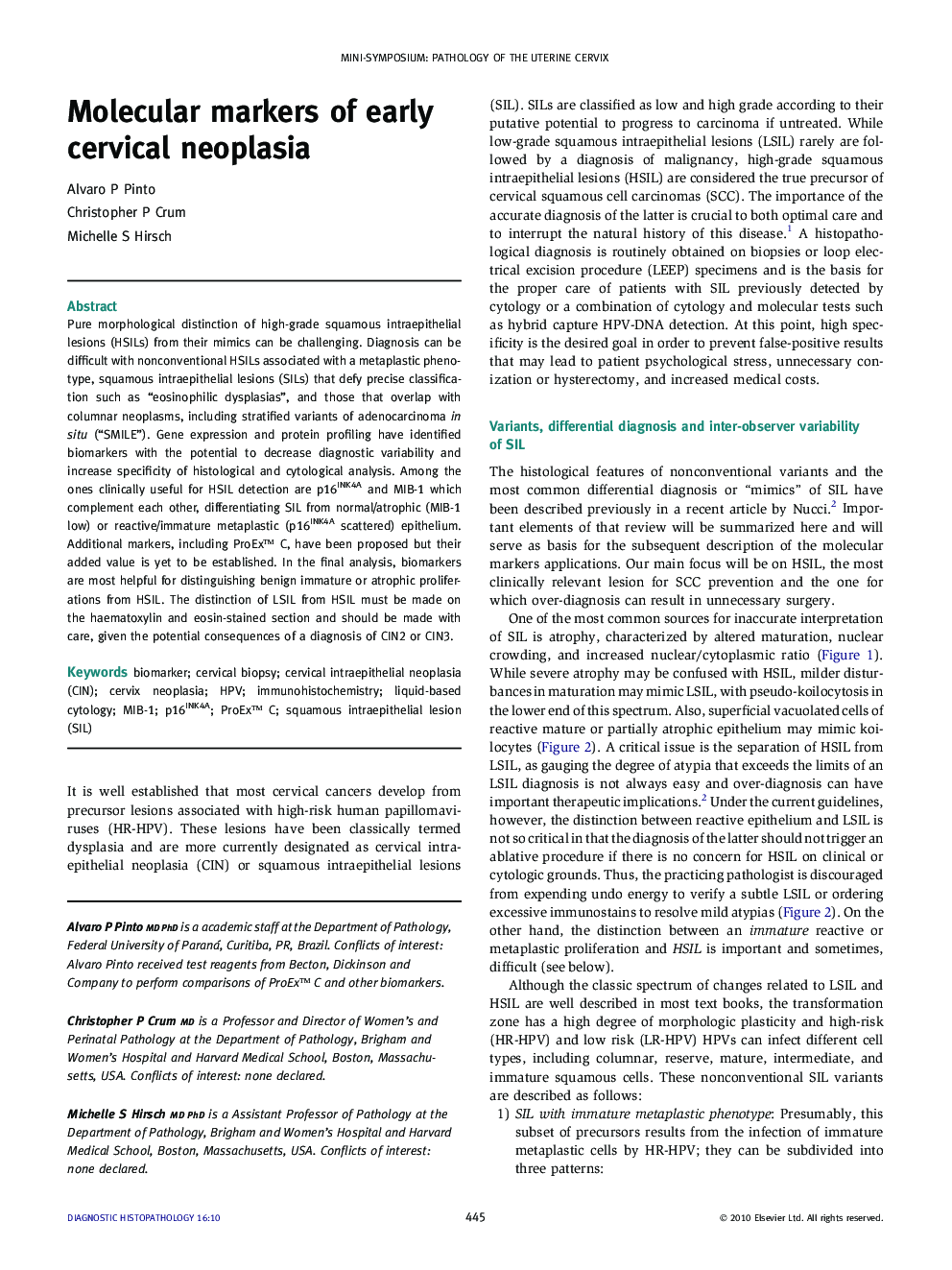| Article ID | Journal | Published Year | Pages | File Type |
|---|---|---|---|---|
| 4131558 | Diagnostic Histopathology | 2010 | 10 Pages |
Pure morphological distinction of high-grade squamous intraepithelial lesions (HSILs) from their mimics can be challenging. Diagnosis can be difficult with nonconventional HSILs associated with a metaplastic phenotype, squamous intraepithelial lesions (SILs) that defy precise classification such as “eosinophilic dysplasias”, and those that overlap with columnar neoplasms, including stratified variants of adenocarcinoma in situ (“SMILE”). Gene expression and protein profiling have identified biomarkers with the potential to decrease diagnostic variability and increase specificity of histological and cytological analysis. Among the ones clinically useful for HSIL detection are p16INK4A and MIB-1 which complement each other, differentiating SIL from normal/atrophic (MIB-1 low) or reactive/immature metaplastic (p16INK4A scattered) epithelium. Additional markers, including ProEx™ C, have been proposed but their added value is yet to be established. In the final analysis, biomarkers are most helpful for distinguishing benign immature or atrophic proliferations from HSIL. The distinction of LSIL from HSIL must be made on the haematoxylin and eosin-stained section and should be made with care, given the potential consequences of a diagnosis of CIN2 or CIN3.
